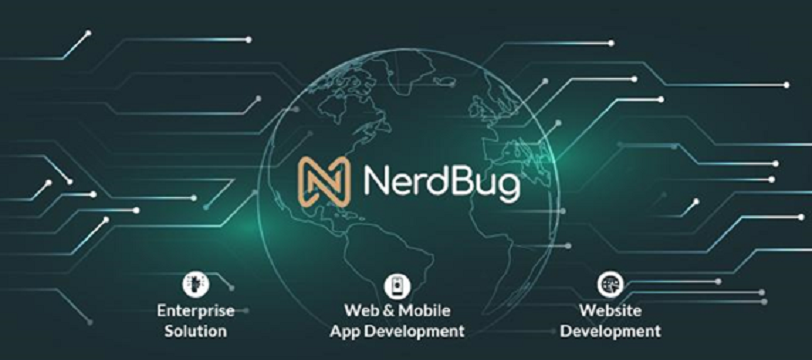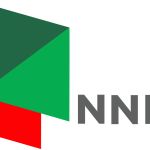Technology
The Latest Trends and Best Practices in Cybersecurity: Ensuring Secure Software Development

In today’s digital landscape, cybersecurity remains a top priority for organizations worldwide. As cyber threats evolve and become more sophisticated, staying updated with the latest trends and adhering to best practices is crucial. This article explores the current trends in cybersecurity and outlines the software development requirements necessary for organizations to align with the trends and industry standards.
Latest Trends in Cybersecurity
- Zero Trust Architecture: Traditional perimeter-based security models are becoming obsolete. Zero Trust Architecture (ZTA) is a security model that assumes no user or device, whether inside or outside the network, can be trusted by default. Verification is required from everyone attempting to access resources on the network. This model helps prevent data breaches by implementing strict identity verification processes.
- Artificial Intelligence and Machine Learning: AI and ML are being leveraged to enhance threat detection and response. These technologies can analyze vast amounts of data to identify patterns and anomalies that may indicate a security threat. AI-driven cybersecurity solutions can provide real-time threat intelligence and automate responses to mitigate risks quickly.
- Extended Detection and Response (XDR): XDR integrates multiple security products into a cohesive security operation system. It provides a holistic view of threats across the entire IT environment, including endpoints, networks, and servers. XDR improves threat detection and response capabilities by correlating data from various sources and providing actionable insights.
- Cloud Security: As more organizations migrate to the cloud, securing cloud environments has become a top priority. Cloud security trends include the use of cloud-native security tools, encryption of data at rest and in transit, and robust identity and access management (IAM) solutions to protect cloud resources.
- Supply Chain Security: Cyberattacks targeting supply chains have increased, highlighting the need for robust supply chain security measures. Organizations are now focusing on assessing and managing risks associated with third-party vendors and ensuring that their security practices are up to par.
- Privacy-Enhancing Technologies (PETs): PETs are designed to protect individual privacy by minimizing the amount of personal data processed. Techniques such as differential privacy, homomorphic encryption, and federated learning are gaining traction to ensure data privacy while still allowing valuable data analysis.
To take advantage of these trends, organisations should prioritise innovation abiding by the following best practices:
Best Practices in Cybersecurity
- Implement Strong Access Controls: Utilization of multi-factor authentication (MFA) and role-based access control (RBAC) limits access to sensitive information and systems. Ensure that access permissions are regularly reviewed and updated.
- Regularly Update and Patch Systems: Keeping software and systems up to date is crucial for protecting against known vulnerabilities. Implement automated patch management processes to ensure timely updates.
- Conduct Regular Security Audits and Assessments: Perform regular security audits, vulnerability assessments, and penetration testing to identify and remediate potential security weaknesses.
- Educate and Train Employees: Human error is a significant factor in many security breaches. Regular cybersecurity training and awareness programs can help employees recognize and respond to potential threats effectively.
- Develop an Incident Response Plan: Prepare for potential security incidents by developing and regularly updating an incident response plan. Conduct drills to ensure that the response team is ready to act swiftly in the event of a breach.
- Encrypt Sensitive Data: Use encryption to protect sensitive data both at rest and in transit. This ensures that even if data is intercepted, it remains unreadable to unauthorized parties.
In addition to the recommendations above, tech-enabled organisations should consider the following requirements when developing software for enhanced cybersecurity.
Software Development Requirements for Enhanced Cybersecurity
- Secure Coding Practices: Adhere to secure coding standards and guidelines such as OWASP’s Top Ten. Conduct code reviews and static code analysis to identify and fix security vulnerabilities during the development process.
- Integrate Security into the DevOps Process (DevSecOps): Incorporate security practices into the DevOps workflow to ensure that security is considered at every stage of the software development lifecycle. Use automated security testing tools to identify and remediate vulnerabilities early.
- Use Secure Development Frameworks and Libraries: Leverage well-established and secure development frameworks and libraries. Ensure that these components are regularly updated to address any newly discovered vulnerabilities.
- Implement Continuous Monitoring and Logging: Enable continuous monitoring and logging of applications and infrastructure to detect and respond to security incidents in real-time. Use security information and event management (SIEM) systems to aggregate and analyze log data.
- Conduct Threat Modeling: Perform threat modeling to identify potential security threats and vulnerabilities in the design phase. This proactive approach helps in building security measures into the architecture from the outset.
- Automate Security Testing: Use automated security testing tools such as static analysis, dynamic analysis, and interactive application security testing (IAST) to identify vulnerabilities throughout the development lifecycle. Automated tests should be integrated into the CI/CD pipeline to ensure continuous security validation.
Conclusion
Staying ahead in the ever-evolving field of cybersecurity requires organizations to be proactive and adopt the latest trends and best practices. By implementing robust security measures and fostering a culture of security awareness, organizations can significantly reduce their risk of cyber threats.
Software Development Companies like Nerdbug integrate security into product development lifecycles, aligning with global best practices. Embracing technologies like AI and cloud security, alongside following best practices such as zero trust and continuous monitoring, will help organizations safeguard their digital assets and maintain trust with their customers and stakeholders.
Technology
Nigeria, Google in Talks for New Undersea Cable

By Adedapo Adesanya
The Nigerian government is in advanced talks with Google for a new undersea cable to strengthen the country’s digital connectivity and resilience.
The country wants to augment existing undersea links with Europe, said the chief executive of National Information Technology Development Agency (NITDA), Mr Kashifu Inuwa Abdullahi, as per Bloomberg on Tuesday.
Mr Inuwa said this was necessary at this time, calling Nigeria’s current reliance on cables that follow the same path “a single point of failure.”
Google earlier this year said it plans to expand its digital presence significantly in Africa with the development of four new strategic subsea cable connectivity hubs in the north, south, east, and west regions of the continent.
Already, Google is investing $2.1 million to accelerate Nigeria’s artificial intelligence (AI) growth, aiming to create one million digital jobs and bolster the country’s expanding technology economy.
This is aligned with Nigeria’s National AI Strategy, which is expected to play a meaningful role in the nation’s broader digital transformation. Projections indicate that AI could contribute up to $15 billion to Nigeria’s economy by 2030.
The fund will support partnerships with local organisations. To achieve these aims, the funding will support partnerships with local organisations working in digital skills development and cyber security.
The investment further signals global trust in Nigeria’s technology sector and underlines the nation’s role as a leader in Africa’s digital transformation. As new opportunities emerge, Google believes it support is set to help shape Nigeria’s economy and its place on the global technology stage.
Technology
Airtel Africa, SpaceX to Launch Starlink Direct-to-Cell Connectivity

By Modupe Gbadeyanka
An agreement for a satellite-to-mobile service that will benefit millions of people in Africa has been entered into between Airtel Africa Plc and SpaceX.
This service is through the introduction of Starlink Direct-to-Cell satellite connectivity across all the 14 markets of Airtel Africa that serve 174 million customers.
Through this partnership, Airtel Africa customers with compatible smartphones in regions without terrestrial coverage can have network connectivity through Starlink, which is the world’s largest 4G connectivity provider (by geographic reach).
The satellite-to-mobile service will begin in 2026 with data for select applications and text messaging.
This agreement also includes support for Starlink’s first broadband Direct-to-Cell system, with next-generation satellites that will be capable of providing high-speed connectivity to smartphones with 20x improved data speed. The rollout will proceed in line with country-specific regulatory approvals.
Airtel Africa is the first mobile network operator in Africa to offer Starlink Direct-to-Cell service, powered by 650 satellites to provide seamless connectivity to its customers in remote areas.
The partnership reinforces Airtel Africa’s commitment to bridge digital divide and offer seamless connectivity to its customers.
Airtel Africa and Starlink will continue to explore additional collaboration opportunities to further advance digital inclusion across the continent.
“Airtel Africa remains committed to delivering great experience to our customers by improving access to reliable and contiguous mobile connectivity solutions.
“Starlink’s Direct-to-Cell technology complements the terrestrial infrastructure and even reaches areas where deploying terrestrial network solutions are challenging.
“We are very excited about the collaboration with Starlink, which will establish a new standard for service availability across all our 14 markets,” the chief executive of Airtel Africa, Mr Sunil Taldar, said.
Also commenting, the Vice President of Sales for Starlink, Ms Stephanie Bednarek, said, “For the first time, people across Africa will stay connected in remote areas where terrestrial coverage cannot reach, and we’re so thrilled that Starlink Direct-to-Cell can power this life-changing service.
“Through this agreement with Airtel Africa, we’ll also deliver our next-generation technology to offer high-speed broadband connectivity, which will offer faster access to many essential services.”
Technology
Simplify Your Mobile Life with eSIM and Virtual Numbers

Managing phone numbers used to be a constant hassle. Between personal lines, work numbers, online registrations, and international travel, people often juggled multiple SIM cards, devices, or expensive roaming plans just to stay reachable. Today, eSIMs and virtual phone numbers offer a smarter way to handle communication. One device can manage multiple lines, switch between them instantly, and keep work and personal contacts separate—all without a physical SIM. For travelers, remote workers, and tech professionals, this setup offers efficiency, control, and flexibility that traditional SIM cards simply cannot match.
A virtual phone number is a digital line that exists independently of any physical SIM. Calls and messages are routed through the cloud, meaning the same number can function across multiple devices: smartphone, tablet, or computer. You can pick a local number in another country without actually being there, or maintain separate lines for freelance projects while keeping your personal number private. Virtual numbers also help protect privacy and streamline online activity. They are perfect for temporary projects, online sign-ups, or situations where you do not want to share your main number.
When paired with eSIM technology, virtual numbers become extremely convenient. Platforms like eSIM Plus let users download multiple numbers onto a single device, switch between them instantly, and manage personal and business lines without touching a physical SIM card. Travelers can maintain local numbers abroad, freelancers can manage multiple client contacts, and tech-savvy users gain complete control over their connectivity. eSIM Plus simplifies this process, allowing for seamless integration of digital numbers and minimizing the complications associated with traditional SIMs.
Businesses also find virtual numbers invaluable. They enable companies to create a local presence in multiple regions without the need for physical offices. Calls can be forwarded to employees anywhere, while integration with CRM tools allows monitoring and analytics of communication. For individuals, virtual numbers enhance privacy and simplify digital life. Whether signing up for online services, running a side business, or protecting personal information, virtual numbers provide flexibility and control that traditional numbers cannot offer.
Everyday Scenarios for Virtual Numbers
Virtual numbers are not just a tech gimmick—they solve real problems.
- International Travel: A traveler can maintain a local number in multiple countries, avoiding expensive roaming fees while staying reachable by family, friends, and colleagues.
- Remote Work and Freelancing: A consultant or freelancer can separate client communications from personal calls without carrying multiple phones. Multiple virtual lines can support different projects simultaneously.
- Privacy Protection: Individuals can use temporary numbers for online registrations, dating apps, or marketplace accounts, significantly reducing spam and unwanted contacts.
- Small Businesses and Startups: Companies can create local contact points in different regions, forward calls to employees, and integrate with communication software for better workflow management.
With eSIMs, managing these numbers becomes effortless. Instead of swapping physical SIM cards, users download the eSIM profile to their device, and virtual numbers become instantly available. This combination provides unparalleled flexibility for modern digital lifestyles.
How Virtual Numbers Work
Getting a virtual number is straightforward. Providers allow you to select a number online, link it to your smartphone or VoIP service, and manage it through an app. Common features include:
- Call forwarding to any device
- Text messaging and multimedia messaging
- Voicemail management
- Temporary numbers for short-term projects or verification purposes
When integrated with eSIM, the activation process is even faster. Download the eSIM profile to your device, and all your virtual numbers are ready to go. This approach is ideal for travelers, remote workers, and anyone managing multiple lines on a single phone without extra hardware.
Leading eSIM Providers
Several providers lead the market in combining eSIM technology with virtual numbers:
- eSIM Plus: Offers digital SIMs integrated with virtual numbers, allowing multiple lines on one device. Users can manage personal, business, and international numbers seamlessly, making it perfect for remote workers, travelers, and freelancers.
- Truphone: Provides global coverage with quick activation. Users can switch numbers without changing SIM cards, ideal for business professionals moving across regions.
- Airalo: Focused on international travelers, offering cost-effective eSIMs for data and voice in over 190 countries. Airalo simplifies connectivity for tourists and remote workers abroad.
- GigSky: Offers pay-as-you-go and subscription eSIM plans suitable for frequent travelers and digital nomads. GigSky supports multiple virtual lines on one device.
- Ubigi: Enterprise-focused, enabling companies to deploy eSIMs and virtual numbers to distributed teams. Employees maintain local numbers across regions without physical SIM swaps.
- Nomad: Travel-oriented eSIM provider supporting multiple virtual lines on one device. Ideal for digital nomads, remote professionals, and long-term travelers.
These services show how eSIMs and virtual numbers have evolved from niche tech to mainstream tools for managing modern communication efficiently.
Advantages Over Traditional Numbers
Virtual numbers have several key advantages over regular SIM-based numbers:
- Multiple lines on one device: Manage work, personal, and international numbers without carrying multiple phones.
- Privacy and control: Easily change or deactivate numbers for temporary projects, online registrations, or spam prevention.
- Global accessibility: Make and receive calls from anywhere without costly roaming charges.
- Integration with software: Works with VoIP apps, cloud platforms, and CRMs. Supports automated call routing, analytics, and communication tracking.
Traditional numbers cannot match this flexibility, efficiency, or convenience. Virtual numbers are built for modern workflows and digitally connected lifestyles.
Combining eSIM and Virtual Numbers
The combination of eSIMs with virtual numbers creates a flexible communication system. One device can handle multiple lines for home, work, or international use. Businesses can provide employees with local numbers in multiple regions without physical offices. Travelers can maintain home and foreign numbers without swapping SIM cards.
Consider a freelance consultant traveling across Europe: a virtual number in France, one in Germany, and a personal line—all on a single device. Clients reach local numbers, costs are minimized, and management happens from one interface. This setup highlights the efficiency eSIMs and virtual numbers provide.
Real-World Examples
- Remote Work Across Time Zones: An employee in Asia receives calls from North American clients using a local virtual number, avoiding international fees. eSIM profiles allow switching lines based on work hours.
- Maintaining Local Presence While Traveling: A business owner visiting multiple countries can maintain virtual local numbers. Clients call local numbers, but calls are forwarded seamlessly.
- Privacy and Online Security: Individuals use temporary virtual numbers for online registrations, reducing spam to their primary number.
These examples show why eSIMs combined with virtual numbers are essential for modern digital workflows.
The Future of Connectivity
With the rise of 5G, cloud communications, and AI-powered tools, eSIMs and virtual numbers will become increasingly integral to daily life. Expect tighter integration with business applications, enhanced security features, and instant switching between personal and professional lines.
For travelers, remote workers, and anyone managing multiple contacts, eSIMs paired with virtual numbers are more than a convenience—they’re a smarter, more efficient way to control communication in today’s digital world.
-

 Feature/OPED6 years ago
Feature/OPED6 years agoDavos was Different this year
-
Travel/Tourism9 years ago
Lagos Seals Western Lodge Hotel In Ikorodu
-

 Showbiz3 years ago
Showbiz3 years agoEstranged Lover Releases Videos of Empress Njamah Bathing
-

 Banking8 years ago
Banking8 years agoSort Codes of GTBank Branches in Nigeria
-

 Economy3 years ago
Economy3 years agoSubsidy Removal: CNG at N130 Per Litre Cheaper Than Petrol—IPMAN
-

 Banking3 years ago
Banking3 years agoFirst Bank Announces Planned Downtime
-

 Banking3 years ago
Banking3 years agoSort Codes of UBA Branches in Nigeria
-

 Sports3 years ago
Sports3 years agoHighest Paid Nigerian Footballer – How Much Do Nigerian Footballers Earn




















